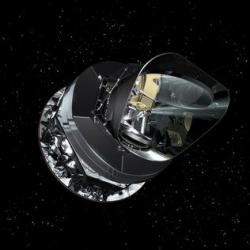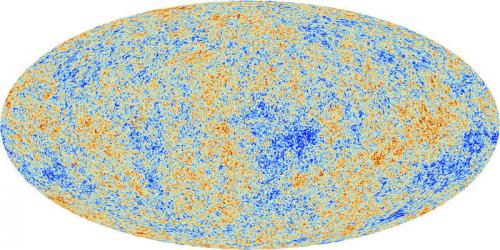Planck

Credit: ESA/AOES Medialab
Planck was a mission to study the cosmic microwave background radiation (CMB). The Planck mission was run by ESA and launched in 2009. In 2013, Planck's first all-sky map of the CMB was released.
Planck made a map of variations in the Universe's oldest light - the cosmic microwave background. It had 2 science instruments on board. These could observe microwave and infra-red light.
A NASA craft called WMAP had carried out a similar mission between 2001 and 2010. However, Planck's results had 2.5 times better resolution than WMAP. This produced a shaper map and revealed more details about the Universe. Planck's precise measurements helped define the average density of matter and dark matter in the Universe. It also suggested that the Universe is older than previously thought.
As well as making a map of the CMB, Planck:
- Created a catalogue of galaxy clusters.
- Observed quasars and dusty galaxies.
- Observed the Milky Way and its magnetic field.
- Studied the Solar System's planets, asteroids, and comets.
In 2013, Planck's mission came to an end. ESA moved it into an orbit around the Sun. This prevents Planck from colliding with any future space missions.

Credit: ESA/Planck

